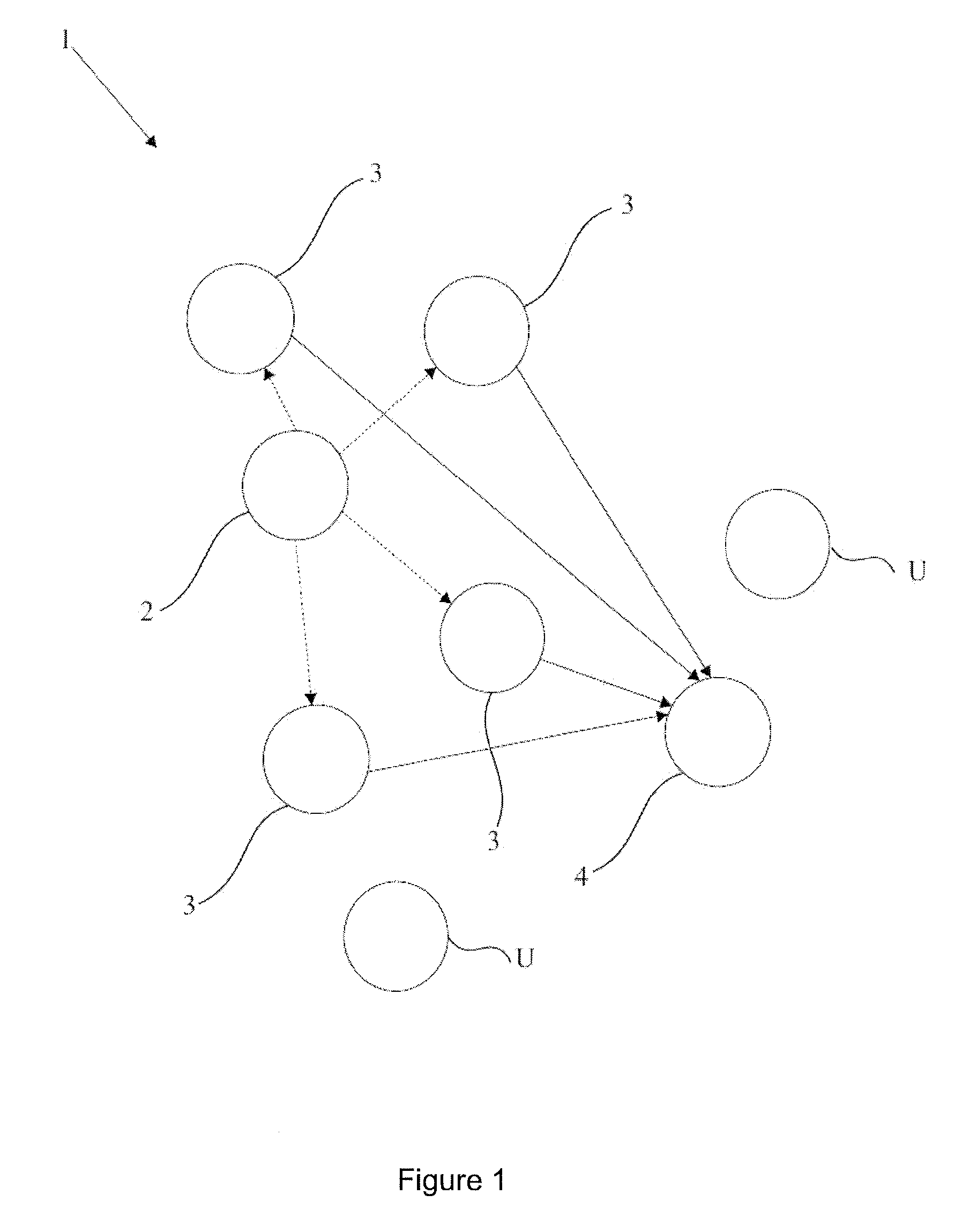System and method of cooperative and opportunistic relaying of transmissions requiring relay coordination
a relaying system and relay technology, applied in the field of cooperative relaying system and method, can solve the problems of inability to reach the diversity gain present in the network using a fixed relay, difficulty in reaching the selected location, additional traffic load and additional delay, etc., to achieve the effect of reducing the total amount of band used, maximum diversity gain and delay
- Summary
- Abstract
- Description
- Claims
- Application Information
AI Technical Summary
Benefits of technology
Problems solved by technology
Method used
Image
Examples
Embodiment Construction
[0018]The system and method developed to fulfill the objectives of the present invention is illustrated in the accompanying figures, in which:
[0019]FIG. 1 is a block diagram of the system.
[0020]FIG. 2 is the flow chart of the relay.
[0021]FIG. 3 is a schematic block diagram of the flow between the relay and destination.
[0022]The components shown in the figures are each given reference numerals as follows:[0023]1. System[0024]2. Source[0025]3. Relay[0026]4. Destination[0027]U. Unit which cannot receive transmission from the source[0028]100. Decision method used in the relay[0029]GVA: Generalized Viterbi Algorithm[0030]CE: Channel Estimation[0031]SCE: Sequence and Channel Estimation
[0032]The system (1), which enables the transmission to be relayed in a common channel and time interval, and the incoming signals to be processed, comprises[0033]a source (2) which transmits,[0034]at least one relay (3) which transmits the transmission that it receives from the source (2) in a joint channel...
PUM
 Login to View More
Login to View More Abstract
Description
Claims
Application Information
 Login to View More
Login to View More - R&D
- Intellectual Property
- Life Sciences
- Materials
- Tech Scout
- Unparalleled Data Quality
- Higher Quality Content
- 60% Fewer Hallucinations
Browse by: Latest US Patents, China's latest patents, Technical Efficacy Thesaurus, Application Domain, Technology Topic, Popular Technical Reports.
© 2025 PatSnap. All rights reserved.Legal|Privacy policy|Modern Slavery Act Transparency Statement|Sitemap|About US| Contact US: help@patsnap.com



